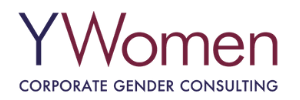Can Your Women’s Leadership Initiative Solve Two of Your Biggest Business Challenges?
For 2019, top CEO concerns include attracting and retaining talent and developing the next generation of leaders.
 Globally, CEOs rank attracting and retaining top talent as their #1 internal concern, according to the findings of The Conference Board survey, C-Suite Challenge 2019. Developing the next generation of leaders was the #3 internal concern (#2 was creating new business models due to disruptive technology).
Globally, CEOs rank attracting and retaining top talent as their #1 internal concern, according to the findings of The Conference Board survey, C-Suite Challenge 2019. Developing the next generation of leaders was the #3 internal concern (#2 was creating new business models due to disruptive technology).
With many industries facing a talent shortage, let’s take a quick look at five trends that are shaping both your current workforce and the pipeline of talent:
- 10,000 Boomers are retiring per day, every day, and this trend will continue for the next 15+ years! By 2025, 36 million skilled employees will have left the workforce.
- Millennials are turning 35, and they represent your budding pipeline. By 2020, they will be the largest employee pool in the country.
- The representation of our workforce is changing rapidly. 85 percent of new entries into the workforce are women and people of color.
- Women are earning more than 60 percent of advanced degrees in this country. If you are a knowledge-based company, you need to attract and retain women.
- The best and brightest aren’t even applying to work for your company. The No. 1 major in business schools today is entrepreneurship.
Creating a situation which looks like this in aggregate:
Which highlights why focusing on women, people of color and new entrants to the workforce are critical to addressing the need to cultivate and retain talent. Also while these are US Based numbers the trend is exactly the same for most of Europe and Canada.
What’s CEO’s Need to Do
With talent acquisition, retention and developing the next generation of leaders weighing on the minds of CEOs, I reached out to several of my colleagues for their insights on retaining top employees and developing a leadership pipeline.
Revisit Your Culture
Liz Guthridge, Managing Director, Connect Consulting Group, notes that “if CEOs are serious about attracting and retaining top talent, they need to wake up and smell their potentially toxic culture. The Conference Board study reveals a huge disconnect between CEOs’ perspective and employees’ experience. CEOs expressed high confidence in having the right culture in place to succeed in 2025. Yet, other research shows the “masculinity contest” culture with all of its toxic behavior is still alive and well today, hurting both men and women. There’s a reason “toxic” was the Oxford Dictionary’s 2018 word of the year. You can’t expect your top talent to stay in a culture they deem unhealthy.”
The culture issues that Liz mentions, comports with the findings from the Network of Executive Women 2018 report, “The Female Crisis.” The report found that senior-women level leave their positions due to feeling isolated, bias embedded in corporate cultures, they don’t feel supported in new roles and work/life issues take a toll.
CEO Action: Hold people accountable. Take a look at your numbers and focus on your retention data, regrettable losses and the number of diverse candidates you recruit and retain. What trends do you see in the numbers, at what rate are people leaving your organization and why? Is there an area or level that is problematic? If you have leaders who have no women or other under-represented groups in their “ready-now” pipeline ask them why not and what are they doing to fix it? Finally, ask yourself if your culture is really ready for 2025.
Develop Your Pipeline
Women need executive sponsors, not just coaches, mentors and women’s affinity groups, to move up in their organization’s leadership pipeline. Mercedes E. Martin, President/CEO, Mercedes Martin & Company, believes that “if CEOs mean business about promoting women into C-suite and other senior roles, leaders need to be advocating for women, including women of color. Being an effective advocate requires a commitment, including taking the time to understand intersectionality in theory and practice.”
For example, Martin shares that, “a woman’s race, class, and other markers of her identity overlap and can form a complex set of prejudices that she faces at work. The leader as an advocate needs to take all of these indicators plus the woman’s skills and experiences into account in order to provide strong navigational support. Saying you want to promote and keep top talent, including women, doesn’t go far enough; you also must invest in others’ career success.”
In my work with Women’s Leadership Groups and ERGs, I encourage them to create a strategic framework that aligns with the values and mission of the organization and includes resources to support the initiative. Additionally successful strategic plans include engaged stakeholders along with accountability measures that are tracked and regularly shared. Trackable metrics include how many women who participate in the program rise through the organization, are given stretch assignments, are selected for High Potential grooming or executive mentoring programs.
CEO Action: Request data on your ERGs and High Potential programs. Ask for success stories. What is your ROI on these initiatives? Where can you invest more resources to get the impact you are looking for? Are you truly investing in women or expecting volunteers to do the heavy lifting?
Summary
As CEO you know it’s in the numbers and holding people accountable. It’s time to take talent and culture seriously and talk about it at every leadership meeting. Doing so may just help solve 2 of your 3 biggest concerns.
Jeffery Tobias Halter is a gender strategist and the President of YWomen, a strategic consulting company focused on engaging men in women’s leadership advancement. Jeffery is the former Director of Diversity Strategy for The Coca-Cola Company. He is the author of two books, WHY WOMEN, The Leadership Imperative to Advancing Women and Engaging Men and Selling to Men, Selling to Women and is a two-time TEDx speaker. His clients include Walmart, Barclays, Bristol-Myers Squibb, Bacardi and dozens of other Fortune 500 companies.
For the updates and ideas to sustain the gender conversation at work sign up for his periodic newsletter and connect with @YWomen on Twitter.




